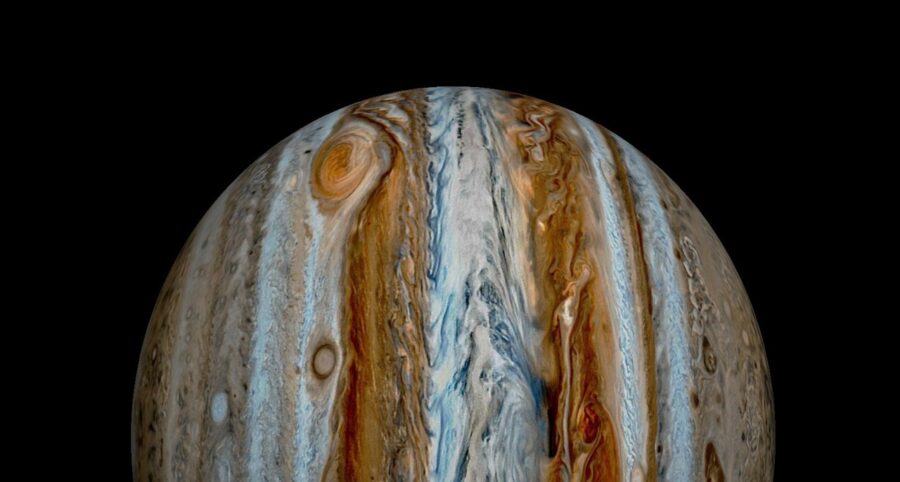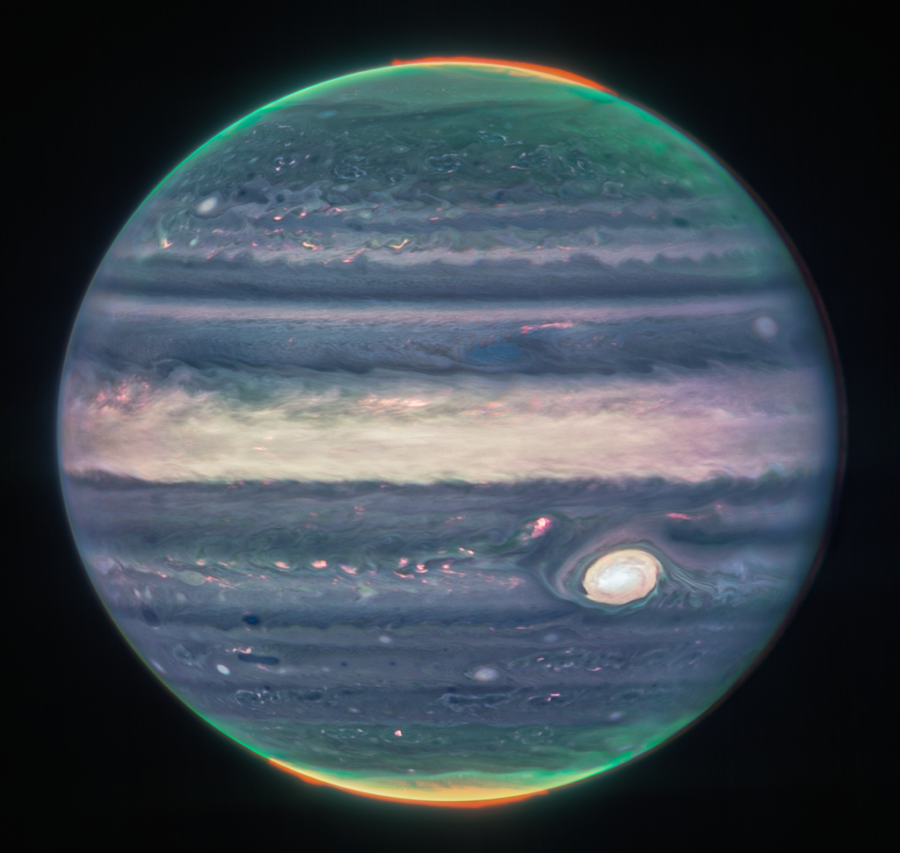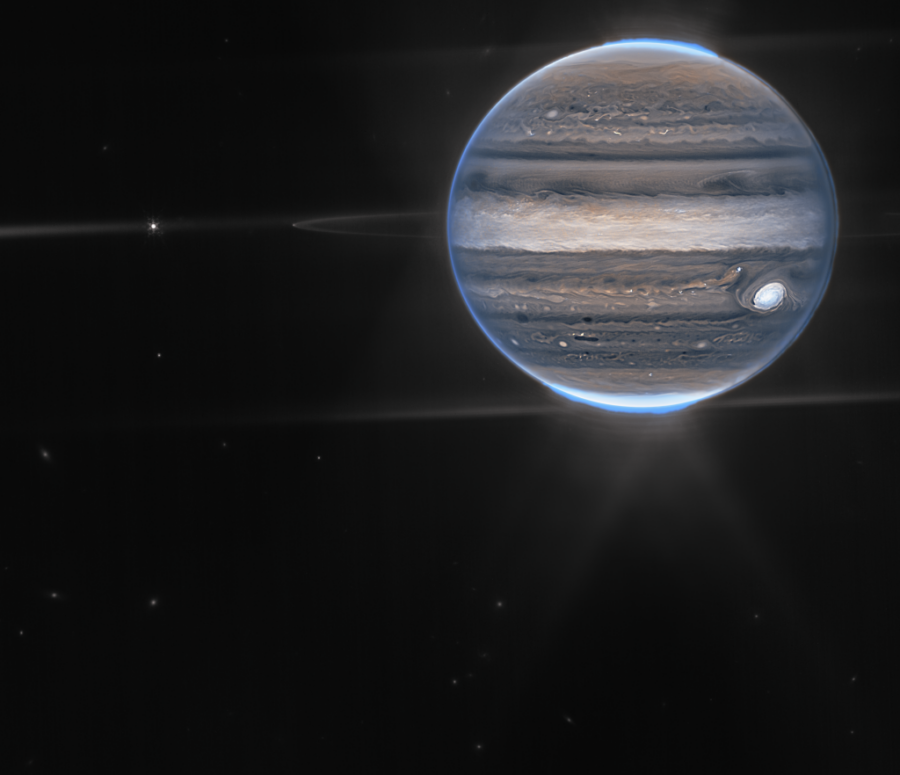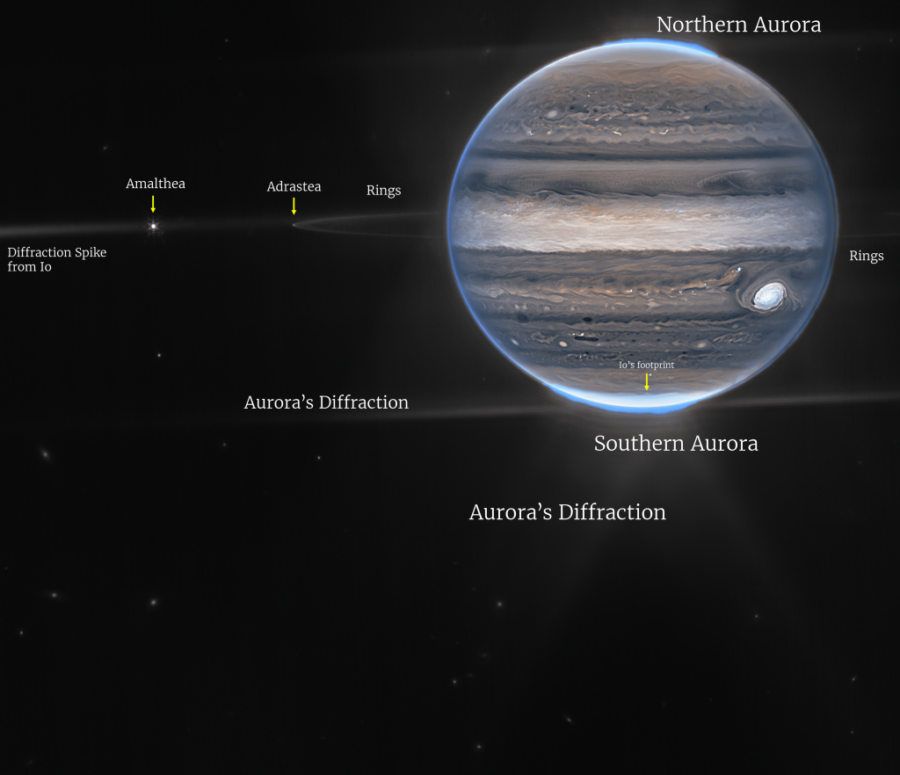James Webb Telescope Captures Stunning Images Of Jupiter
The James Webb Telescope has now captured stunning images of Jupiter, which have been released by NASA.

The James Webb Space Telescope continues to impress with incredible images of our solar system. The most recent round of pictures gives us unprecedented looks at the largest planet in our solar system, Jupiter. NASA explained that the images are composites from several images taken by the telescope. Since infrared light is invisible to the naked eye, the images have been colorized on the visual spectrum to highlight certain details of the planet. You can see some of the images below:



The first image gives us a great close-up view of Jupiter while the other image zooms out a little, showing some of the orbiting moons of Jupiter and the rings. In the third image, you can see some points of interest labeled. For some scale, see you can see Adrastea and Almathea in the second and third images. These are moons of Jupiter. If you want to scale Jupiter to Earth, you can look at the famous Great Red Spot. In these images, the spot appears white due to the reflection of the sun. The Great Red Spot is a raging storm that is larger than Earth. The storm has been going strong for over a century.
Jupiter is easily the biggest planet in our solar system, with a size twice as big as all the other planets of our solar system combined. Jupiter is a gas giant, meaning it doesn’t have a surface like the one we take advantage of on Earth. It’s possible that Jupiter may have a solid inner core. However, the planet is primarily comprised of clouds of ammonia and water, floating in an atmosphere of hydrogen and helium. And if you think Earth’s moon is impressive, Jupiter actually has as many as 79 moons. Perhaps the most interesting of these is Europa, which is the most likely to support life. Io, Ganymede, and Callisto are also of great scientific interest out of the many satellites in Jupiter’s massive orbit.
While the picture from the James Webb Space Telescope isn’t our only observation of Jupiter, it’s definitely one of the most high-quality images we have of the planet yet. NASA has sent a total nine of nine spacecraft to visit Jupiter, with seven of them passing by the gas giant and two of them observing from orbit. Juno is the most recent spacecraft to observe Jupiter up close, arriving on the planet in 2016. While these incredible images of Jupiter are great, the James Webb Space Telescope’s power will be primarily used to observe further flung events and phenomena in our galaxy and beyond. The James Webb Space Telescope is currently about one million miles from Earth and has the capability of detecting light that began traveling toward Earth 13 billion years ago. This amazing technology has the potential to reveal new information on new star formation, galaxy formation, and even the potential life-supporting potential of exoplanets. One thing is for sure, we’re bound to get more cool photos from the James Webb Space Telescope either way.












